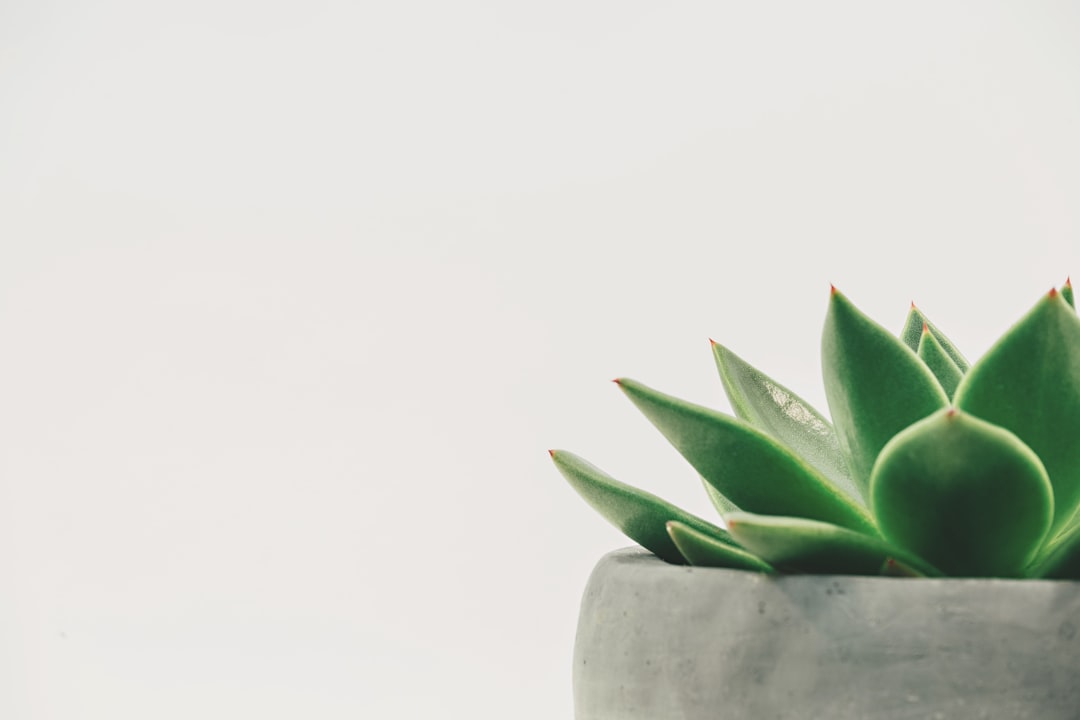Planting Peanuts: A Step-by-Step Guide

Peanuts are a versatile and nutritious crop that is enjoyed by people all over the world. They are not only a popular snack, but they are also used in a variety of dishes and products, such as peanut butter and oil. Growing peanuts can be a rewarding experience, whether you have a large farm or a small backyard garden. In this article, we will explore the different aspects of growing peanuts, from understanding the peanut plant to harvesting and processing the nuts. By the end of this post, you will have all the information you need to successfully grow your own peanuts.
Understanding the Peanut Plant
The peanut plant, also known as Arachis hypogaea, is an annual plant that belongs to the legume family. It is native to South America but is now cultivated in many parts of the world. The plant has a unique growth cycle that begins with planting the seeds in the soil. The seeds germinate and develop into seedlings, which then grow into mature plants. The peanut plant has several parts, including the roots, stems, leaves, flowers, and pods.
The roots of the peanut plant play a crucial role in absorbing water and nutrients from the soil. They also help anchor the plant in the ground. The stems of the plant are above ground and provide support for the leaves and flowers. The leaves are green and have a pinnate shape, with several leaflets attached to a central stem. The flowers of the peanut plant are yellow and develop into pods after pollination. Each pod contains two or three seeds, which are commonly referred to as peanuts.
Choosing the Right Soil and Climate
Peanuts thrive in well-drained soil that is loose and sandy. The ideal soil pH for growing peanuts is between 5.8 and 6.2. It is important to avoid heavy clay soils or soils that are prone to waterlogging, as this can lead to poor root development and disease problems. If your soil is not naturally sandy, you can improve its drainage by adding organic matter, such as compost or well-rotted manure.
In terms of climate, peanuts require a long growing season with warm temperatures. They prefer temperatures between 70°F and 90°F (21°C and 32°C) during the day and around 60°F (15°C) at night. Peanuts also need plenty of sunlight, so it is important to choose a location that receives full sun for most of the day. If you live in a region with a short growing season or cool temperatures, you may need to start your peanut plants indoors and transplant them outside once the weather warms up.
Preparing the Soil for Planting
| Soil Preparation Metric | Measurement |
|---|---|
| Soil pH | 6.0 – 7.0 |
| Organic Matter Content | 2% – 5% |
| Soil Texture | Loamy |
| Soil Moisture | Moist, not waterlogged |
| Soil Temperature | 60°F – 70°F |
| Weed Control | Remove all weeds and grasses |
| Tillage Depth | 6 – 8 inches |
Preparing the soil is an important step in growing peanuts, as it helps create the optimal conditions for plant growth. Start by tilling the soil to break up any compacted areas and remove any weeds or debris. This will also help improve the soil’s drainage. After tilling, add organic matter, such as compost or well-rotted manure, to enrich the soil and improve its fertility. Mix the organic matter into the top few inches of soil using a garden fork or tiller.
It is also important to test your soil’s pH level before planting peanuts. You can do this by using a soil testing kit or sending a sample to a local agricultural extension office. If the pH level is too low or too high, you can adjust it by adding lime to raise the pH or sulfur to lower it. Follow the recommendations provided by your soil test results for the appropriate amount of lime or sulfur to add.
Selecting the Best Peanut Seeds
When it comes to selecting peanut seeds, there are several factors to consider. First, choose a variety that is well-suited to your climate and growing conditions. Some varieties are more tolerant of drought or disease, while others are better suited for cooler temperatures. Check with your local agricultural extension office or seed supplier for recommendations on the best peanut varieties for your area.
It is also important to choose seeds that are disease-resistant. Peanuts are susceptible to several diseases, such as leaf spot and root rot, so selecting disease-resistant varieties can help prevent these problems. Look for seeds that have been certified as disease-free by a reputable seed supplier.
When purchasing peanut seeds, make sure to buy from a reputable source. Look for seeds that are clean, uniform in size, and free from any signs of damage or disease. Avoid seeds that are discolored or shriveled, as these may not germinate properly.
Planting Methods: In-Row vs. Wide-Row

There are two main planting methods for growing peanuts: in-row and wide-row. In-row planting involves planting the seeds in a single row, with a spacing of about 6 to 8 inches (15 to 20 cm) between plants. This method is commonly used in commercial peanut production and allows for easier cultivation and harvesting.
Wide-row planting, on the other hand, involves planting the seeds in multiple rows with wider spacing between plants. This method is often used in home gardens or small-scale production and allows for better airflow and weed control.
Both planting methods have their advantages and disadvantages. In-row planting allows for more efficient use of space and easier cultivation and harvesting. However, it can be more labor-intensive and may require more frequent irrigation. Wide-row planting provides better airflow and weed control but may require more space and can be more difficult to cultivate and harvest.
Choose the planting method that best suits your needs and resources. Consider factors such as available space, labor, and equipment when deciding which method to use.
Watering and Fertilizing Peanuts
Peanuts require regular watering to ensure proper growth and development. The plants need about 1 to 1.5 inches (2.5 to 3.8 cm) of water per week, either from rainfall or irrigation. It is important to water deeply and evenly, making sure the soil is moist but not waterlogged. Avoid overwatering, as this can lead to root rot and other diseases.
In terms of fertilization, peanuts have specific nutrient requirements that need to be met for optimal growth. Before planting, it is recommended to conduct a soil test to determine the nutrient levels in your soil. Based on the results, you can then apply the appropriate fertilizers to meet the plant’s needs.
Peanuts require a balanced fertilizer that contains nitrogen, phosphorus, and potassium, as well as micronutrients such as zinc and boron. The exact amount and timing of fertilizer application will depend on your soil’s nutrient levels and the specific recommendations provided by your soil test results.
Managing Pests and Diseases
Like any crop, peanuts are susceptible to pests and diseases that can affect their growth and yield. Some common pests that can damage peanut plants include aphids, thrips, and armyworms. These pests can be controlled through various methods, such as using insecticidal soaps or organic insecticides, practicing crop rotation, and maintaining good weed control.
Peanuts are also prone to several diseases, including leaf spot, root rot, and tomato spotted wilt virus. To prevent these diseases, it is important to choose disease-resistant varieties and practice good sanitation in the garden. This includes removing any infected plants or debris and avoiding overhead irrigation, which can promote disease spread.
If you notice any signs of pest or disease damage on your peanut plants, take action immediately to prevent further spread. Consult with your local agricultural extension office or a professional for guidance on the best treatment methods for your specific situation.
Harvesting and Storing Peanuts
Peanuts are typically ready for harvest about 120 to 150 days after planting, depending on the variety and growing conditions. The best way to determine if the peanuts are ready for harvest is to check the pods. Mature pods will have a yellow color and the outer shell will be firm and well-filled.
To harvest peanuts, carefully dig up the plants using a garden fork or shovel. Shake off any excess soil from the plants and lay them out in a single layer to dry. Allow the plants to dry for about two to three weeks in a warm, well-ventilated area. Once the plants are dry, remove the peanuts from the pods by hand or using a mechanical sheller.
After harvesting, it is important to store peanuts properly to maintain their quality and freshness. Store them in a cool, dry place in airtight containers or bags. Avoid exposing the peanuts to moisture or high temperatures, as this can cause them to spoil or become rancid.
Roasting and Processing Peanuts
Once you have harvested your peanuts, you can enjoy them as a snack or use them in various recipes and snacks. One popular way to enjoy peanuts is by roasting them. To roast peanuts, preheat your oven to 350°F (175°C). Spread the peanuts in a single layer on a baking sheet and roast them for about 15 to 20 minutes, stirring occasionally, until they are golden brown and fragrant.
You can also use peanuts to make homemade peanut butter or peanut oil. To make peanut butter, simply blend roasted peanuts in a food processor until smooth and creamy. Add a pinch of salt or sweetener if desired. For peanut oil, you can crush the roasted peanuts using a mechanical press or extract the oil using a solvent extraction method.
Peanuts can also be used in a variety of recipes, such as stir-fries, salads, and baked goods. They can be added to sauces, used as a topping for ice cream or yogurt, or ground into flour for gluten-free baking. Get creative and experiment with different ways to incorporate peanuts into your favorite dishes.
Tips for a Successful Peanut Crop
To summarize the key takeaways for growing a successful peanut crop:
1. Choose the right soil and climate: Peanuts prefer well-drained soil with a pH level between 5.8 and 6.2. They also require a long growing season with warm temperatures and plenty of sunlight.
2. Prepare the soil properly: Tilling the soil and adding organic matter will help create the optimal conditions for peanut growth.
3. Select disease-resistant varieties: Choose peanut seeds that are disease-resistant to prevent common diseases such as leaf spot and root rot.
4. Use the appropriate planting method: Decide whether in-row or wide-row planting is best for your needs and resources.
5. Water and fertilize properly: Provide regular watering and apply the appropriate fertilizers based on your soil’s nutrient levels.
6. Manage pests and diseases: Monitor your plants for signs of pests or diseases and take action immediately to prevent further damage.
7. Harvest and store peanuts correctly: Harvest peanuts when the pods are mature and store them in a cool, dry place to maintain their quality.
Growing peanuts can be a rewarding experience that allows you to enjoy fresh, homegrown nuts. By understanding the peanut plant, choosing the right soil and climate, preparing the soil properly, selecting high-quality seeds, using the appropriate planting method, providing proper watering and fertilization, managing pests and diseases, harvesting and storing peanuts correctly, and exploring different ways to roast and process peanuts, you can successfully grow your own crop.
Remember to consult with your local agricultural extension office or a professional for specific recommendations based on your location and growing conditions. With proper care and attention, you can enjoy a bountiful harvest of delicious peanuts. So why not give it a try and start growing your own peanuts today?



